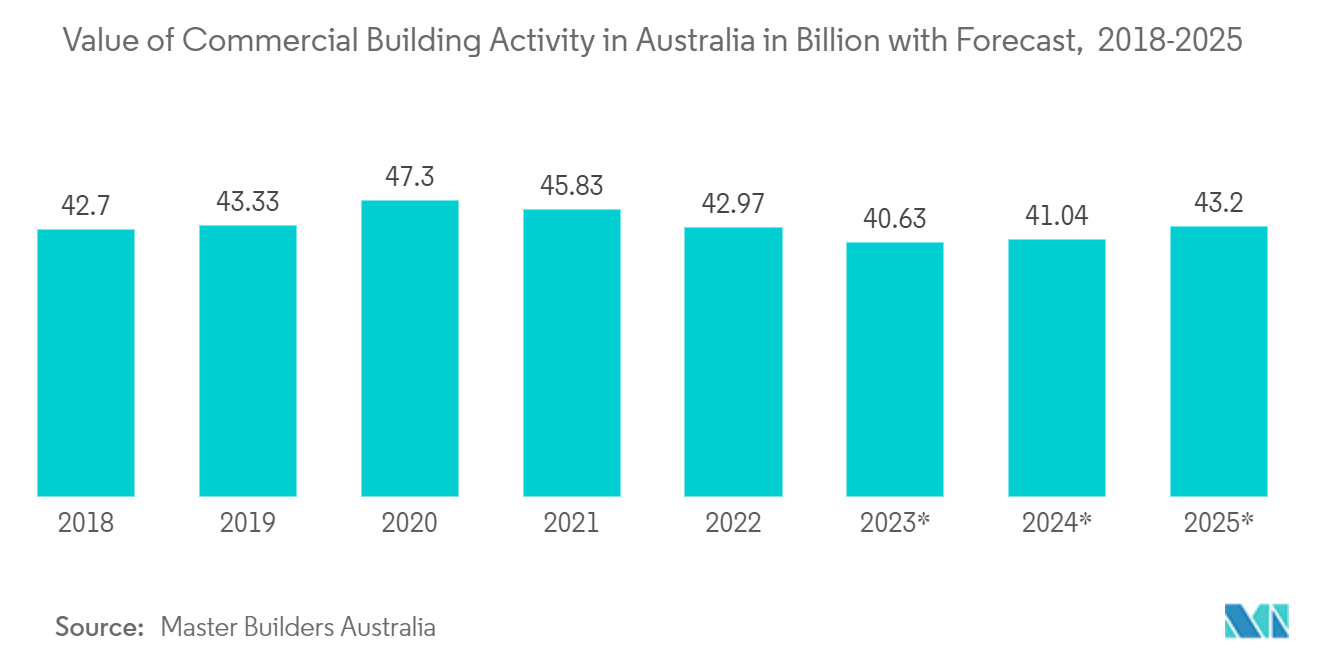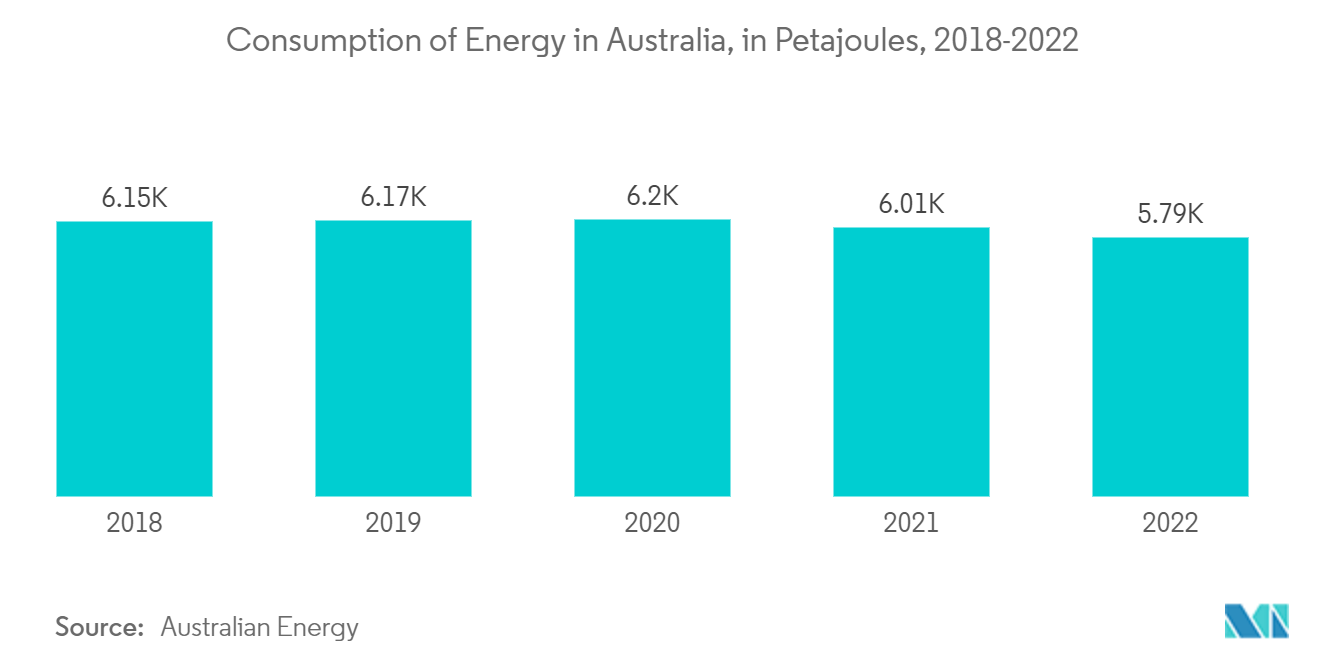Market Trends of Australia Emergency Lighting Industry
This section covers the major market trends shaping the Australia Emergency Lighting Market according to our research experts:
Commercial Segment in Australia is Expected to Drive the Market
- Rapid urbanization has fueled the demand for residential and commercial buildings, leading to increased construction projects across the country. According to the Australian industry and Skill committee, the Construction industry generates USD 367.2 billion in revenue, producing around 9% of Australia's Gross Domestic Product. It is projected to grow at an annual rate of 2.4% over the five years from 2019 to 2024.
- Commercial construction activity is increasing in the country. According to Master Builders Australia, an association of 32,000 building and construction companies in Australia, the value of commercial building activity in Australia accounted for USD 29.6 billion in 2022. and it is forecasted to increase by USD 29.8 billion in 2025. The increase in commercial building activity presents new opportunities for the market.
- The stringent guidelines of the governmental authorities in the country push the adoption of emergency lighting in commercial buildings. According to the National Construction Code and Victorian Building Authority, Emergency Lighting is required to be installed in all Class 1b, 2, 3, 4, 5, 6, 7, 8, and 9 Buildings. Also, all emergency lighting is required to meet the Australian standards in AS/NZS 2293 parts 1, 2, and 3. These standards outline the design, installation, maintenance, and product requirements of emergency lighting systems required in all commercial premises. Government initiatives may further drive the demand for the studied market.
- The power outages in the country also develop a need for emergency lighting. Recently, various parts of central and southern Victoria were affected by a power outage caused due to damaging winds. According to CitiPower and PowercorAusNet, the power outage led to commercial and transport disruptions as businesses without backup generators had to suspend operations.
- Emergency lighting is necessary in such cases of power outages in the commercial vertical. Furthermore, in November 2022, gusty winds, heavy rain, and 423,000 lightning strikes caused widespread damage to power lines across Australia, leaving more than 34,000 people still waiting for electricity reconnections.

LEDs are Expected to Witness Significant Growth
- The increasing government policies in the country, such as a ban on the usage of incandescent light and the energy-efficient and cost-saving nature of LEDs, are increasing the penetration of LEDs. Moreover, LEDs are highly controllable, as the integrity of LEDs can vary based on the requirements when integrated with a driver.
- For instance, according to Australian Energy Market Operator (AEMO), as of February 2022, electricity usage across Australia is estimated to be 93.5 terawatt hours. This was a decline in electricity use across the country compared to previous years. Adopting low-power consumption lighting systems in emergency lighting will drive growth.
- LEDs reduce power consumption and light pollution and have higher self-life than halogen bulbs. The increasing penetration of LEDs, due to their energy-efficient and cost-saving nature, is impacting the market's growth. As they are highly controllable, when integrated with a driver, the intensity can vary based on the requirements.
- According to Energy Rating Australian Government report, on average, there are 37 light bulbs which account for 10% of the average Australian household electricity budget. By replacing 18 halogen lamps with LEDs, customers can save AUD 102 per year.
- Moreover, in October 2022, Ledtec, a significant player in the LED lighting revolution across industries in Australia with its innovative, heavy-duty, durable, and energy-efficient, introduced the KUE industrial LED light series to mine sites in Australia, ascertaining the need for a more competitive, robust LED light that is environmentally friendly and cost-effective. Such investments in LED lights by different players in the country may further drive the studied market growth.


